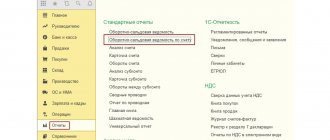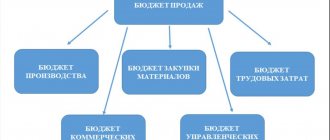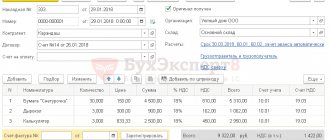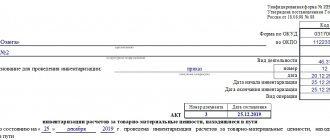Containers are one of the types of inventories that are necessary for packaging and packaging finished products, goods and other valuables and for their delivery and proper storage. How to take containers into account in accounting and tax accounting? What type of packaging is there?
There are several packaging options. Containers are classified according to packaging material, purpose and type of use. Depending on the type of use, disposable and reusable packaging are distinguished. Disposable containers are made from paper or cardboard, polyethylene, reusable containers are barrels or boxes made of metal, wood or plastic, as well as corrugated cardboard.
General provisions for container accounting
According to paragraph 1 of Art. 481 of the Civil Code of the Russian Federation (unless otherwise provided by the contract), the seller is obliged to transfer the goods to the buyer in containers and (or) packaging, with the exception of goods that, by their nature, do not require packaging and (or) packaging.
Containers are a type of inventory intended for packaging, transportation and storage of goods.
In paragraph 160 of the guidelines for accounting of inventories, approved by Order of the Ministry of Finance of Russia dated December 28, 2001 No. 119n, it is recommended to keep accounting records of containers depending on the material from which they are made, according to the following types:
- wood containers;
- cardboard and paper containers;
- metal containers;
- plastic containers;
- glass containers;
- containers made of fabrics and non-woven materials.
The composition of the container also takes into account materials and parts intended specifically for the manufacture and repair of containers - container materials (parts for assembling boxes, barrel staves, hoop iron, cork and polyethylene cork, foil, etc.).
Receipt of containers from suppliers, shipment (release) of containers to customers is documented with the same documents as receipt and shipment of goods, indicating in the documents the name, distinctive features, quantity, price and cost of the container.
For containers that are not specified separately in the suppliers' accompanying documents, but which can be used for some purpose, acts are drawn up on the receipt of containers not listed in the supplier's invoice (Form No. TORG-5).
The payment procedure and the level of prices for containers are determined by counterparties when concluding contracts for the supply of goods.
Containers according to their functions differ into direct packaging and outer packaging.
Direct packaging
It is characterized by the fact that it is inseparable from the product included in it (perfume bottles, tin cans for packaging coffee and beer, plastic bottles for drinks, etc.) and can be used independently only after this product has been used up. The cost of such packaging, as a rule, is included in the cost of the packaged goods, is not highlighted in the accompanying documents from suppliers, is not paid separately by the buyer and is taken into account together with the goods on account 41, subaccount 1 “Goods in warehouses”.
After the goods are consumed, they go to the warehouse if they can be used within the organization or sold externally.
Container serving as outer packaging
, can make a single or multiple turnover (reusable packaging). If the cost of disposable packaging is included in the cost of goods, it is taken into account in the same way as direct packaging.
Sometimes the cost of disposable packaging is not included in the cost of goods, is highlighted in the accompanying documents of suppliers and is paid separately by the buyer. In this case, it is received in the usual manner, can be sold to other organizations along with the goods or separately (after using the goods packaged in it), or used within the organization for certain purposes). If it is impossible to use for the above purposes, disposable containers are written off as expenses.
Reusable packaging
in the accompanying documents of suppliers is indicated as a separate line at the prices specified in the contracts. If, under the terms of the contract, the reusable packaging is not subject to return to the supplier, then ownership of it passes to the buyer simultaneously with the transfer of ownership of the goods.
According to Art. 517 of the Civil Code of the Russian Federation, unless otherwise established by the contract, the buyer is obliged to return the reusable packaging to the supplier in the manner and within the time limits established by law, other legal acts or the contract.
Returnable packaging typically includes:
- wooden containers (boxes, barrels, tubs, etc.);
- cardboard containers (boxes made of corrugated and flat glued cardboard, etc.);
- metal and plastic containers (barrels, flasks, boxes, cans, baskets, etc.);
- glass containers (bottles, jars, carboys, etc.);
- containers made of fabric and non-woven materials (bags, packaging fabrics, etc.);
- special containers, i.e. containers specially made for packaging certain products (goods).
According to paragraph 3 of Art. 254 of the Tax Code of the Russian Federation, the classification of containers as returnable or non-returnable is determined by the terms of contracts for the purchase of inventory items.
If the container transferred to the buyer is not returned, the supplier has the right to file a claim with the buyer demanding its return or to pay its cost, as well as impose fines if this is provided for in the contract.
If, under the terms of the contract, reusable packaging is subject to return to the supplier, then ownership of it does not pass to the buyer simultaneously with the transfer of ownership of the goods until a certain period during which the packaging must be returned to the supplier.
The cost of empty containers returned to the supplier is paid to the buyer also at the prices stipulated in the relevant contracts.
A type of reusable packaging that must be returned to suppliers is packaging equipment.
Container equipment
- this is a type of container intended not only for storage and transportation, but also for the sale of goods from it.
Reporting on the availability and movement of containers is usually combined with reporting on goods, where a separate column is provided to reflect balances, receipts and consumption of containers.
However, reporting on packaging can be prepared separately from goods (Report on packaging form No. TORG-30).
UTII
The cost of received packaging (both returnable and non-returnable) does not affect the amount of UTII, since when determining the single tax, only the imputed income of the organization is taken into account (Article 346.29 of the Tax Code of the Russian Federation).
If an organization, under the terms of the contract, does not have to pay for packaging and at the same time it plans to use it in its activities, do not take into account income in the form of the market value of this packaging when calculating UTII. This is explained by the fact that when determining the single tax, only the imputed income of the organization is taken into account (Article 346.29 of the Tax Code of the Russian Federation). If an organization plans to sell packaging, it will have to pay income tax, VAT and other taxes provided for by the general taxation system. After all, a one-time sale of one’s own property is not subject to UTII (Article 346.29 of the Tax Code of the Russian Federation, letter of the Ministry of Finance of Russia dated June 19, 2006 No. 03-11-04/3/297). Then, in this case, the organization will have to keep separate records of income and expenses for each type of activity (clause 7 of Article 346.26 of the Tax Code of the Russian Federation).
The procedure for recording transactions with containers in accounting accounts
In trade organizations, the presence and movement of all types of containers, both under goods and empty, is taken into account in account 41, subaccount 3 “Containers under goods and empty”. Packaging equipment, which according to accounting rules is classified as non-current assets, is accounted for in account 01 “Fixed Assets” with depreciation calculated in the prescribed manner.
Containers are accepted for accounting at the actual cost, which consists of all the costs of its purchase and delivery or the costs of its production.
If there are a large number of containers, you can use discount prices established by the organization independently, differentiated by types of containers (names, sizes, grades, etc.).
The difference between the actual cost of packaging and its book price is written off to the financial results of the organization as part of operating income and/or expenses.
If a certain type of container was purchased at different prices, then the inventory of containers, as well as goods, can be assessed at average prices using the FIFO and LIFO methods.
Containers received from suppliers along with goods arrive with them at the same time. In this case, if the container has been paid to the supplier (or is subject to payment), then the following entry is made for its purchase price:
Debit 41 subaccount 3 “Empty containers and under goods” Credit 60 “Settlements with suppliers and contractors”
If the container is not paid separately to the supplier, but can be used in the organization, then an entry is made for its cost at market prices:
Debit 41 subaccount 3 “Empty containers and under goods” Credit 91 “Other income and expenses”
If the cost of packaging shipped with goods to the buyer is paid separately, then the following entries are made for its shipment:
Debit 62 “Settlements with buyers and customers” Credit 91 “Other income and expenses” - for the selling price of containers; Debit 91 “Other income and expenses” Credit 41 subaccount 3 “Containers under goods and empty” - for the cost of containers at accounting prices.
The result from the sale of packaging (income or loss) is shown in account 91 “Other income and expenses”.
To return containers to suppliers, they usually issue a consignment note.
The costs of transporting returnable packaging are paid either by the supplier or the buyer (depending on the terms of the contract). They are written off by the supplier as selling expenses, and by the buyer as transportation and procurement costs or selling expenses.
Buyers of goods usually reimburse the supplier of returnable packaging for the costs associated with its depreciation, repair, cleaning, washing, etc. in the amounts specified in the contracts.
The buyer writes off these expenses as transportation and procurement costs or distribution costs, and the supplier attributes the amounts received from the buyer to financial results.
If the above expenses are attributable to the supplier, he writes them off as selling expenses.
The cost of packaging written off as unnecessary, in accordance with clause 2.14 of the methodological recommendations for accounting of costs included in distribution and production costs, and financial results at trade and public catering enterprises, is subject to inclusion in distribution costs under the item “containing expenses”.
In this case, it is necessary to separate in accounting the facts of write-off of containers as unnecessary and loss of containers.
Containers that are not subject to return to suppliers or subsequent sale to buyers of goods are either sold to third parties or written off as unnecessary as distribution costs, since its cost in this case is not a loss of material assets, but represents a necessary expense item for organizing the process of buying and selling goods .
Accounting for shortages, broken and scrap containers is carried out in the manner prescribed for recording these facts during operations with goods.
The write-off of packaging equipment recorded on account 01 “Fixed Assets” is carried out in the manner established for the write-off of fixed assets.
Analytical accounting of containers by financially responsible persons and accounting departments is carried out similarly to the accounting of goods.
OSNO and UTII
If an organization combines the general taxation system and UTII for incoming packaging, which will be used both in activities transferred to UTII and in activities on the general taxation system, it is necessary to organize separate accounting for income tax and VAT (clause 9 of Article 274, paragraph 5, clause 4, clause 4.1, article 170 of the Tax Code of the Russian Federation). The cost of packaging, which relates to activities on the general taxation system, should be taken into account when calculating income tax (Article 254 of the Tax Code of the Russian Federation). You can use it to deduct VAT (Article 171 of the Tax Code of the Russian Federation). Do not take into account containers used in activities on UTII for tax purposes (clause 1 of Article 346.29 of the Tax Code of the Russian Federation).
Features of accounting for collateral containers
For some types of reusable packaging, according to the contract, the supplier may charge the buyer a deposit (instead of the cost of the container). Collection of a deposit for packaging is carried out in cases provided for in contracts and is a means of ensuring the buyer’s obligation to return the packaging.
The terms of the agreement may also provide for additional sanctions for failure to fulfill obligations to return the deposit container.
If the reusable packaging is returned to the supplier within the period stipulated by the contract, its deposit value is returned to the buyer or is counted, by agreement of the parties, to pay off the buyer's debt for goods already supplied or as an advance for future deliveries of goods.
If the container is not returned to the supplier within the terms stipulated by the contract, ownership of it passes to the buyer and the deposit value of the container is not returned to him.
In this case, the supplier must reflect the deposit value of the container as proceeds from its sale and charge VAT.
The amounts of the received (paid) collateral are reflected in account 76 “Settlements with various debtors and creditors” in correspondence with the cash accounts (both for the supplier and the buyer).
Accounting for collateral containers from the seller
The owner of returnable containers shipped to the buyer is the supplier. This container is not sold to the buyer, but is transferred to him for temporary possession and use.
After shipping the container to the buyer, the supplier does not write it off from his balance sheet, but must record the fact of this shipment, i.e. credit account 41.3. The question arises: which account should be debited? Some authors suggest using account 45 “Goods shipped” for this purpose. However, the instructions for using the chart of accounts indicate that account 45 “is intended to summarize information on the availability and movement of shipped products (goods), the proceeds from the sale of which cannot be recognized in accounting for a certain time...”. It follows that there will eventually come a time when this revenue will be recognized. One of the conditions for recognizing revenue in accordance with clause 12 of PBU 9/99 “Income of the organization” is the transfer of ownership from the seller to the buyer. However, this transition usually does not occur and, therefore, it is unlawful to use the score 45 in this case. In our opinion, the movement of returnable packaging (shipment to the buyer, return by the buyer) should be reflected within the account in which the deposited packaging is accounted for (for example, in separate sub-accounts: “Containers shipped to customers” and “Containers in warehouse”).
Clause 182 of the guidelines for accounting for inventories states that reusable packaging, for which deposit amounts are established in accordance with the terms of contracts, is accounted for at these amounts (hereinafter referred to as deposit prices). The difference between the actual cost of the container and its deposit price is taken into account by the supplier in the financial performance accounts as operating income and (or) expenses.
Main accounts:
Debit 41 subaccount 3 “Containers shipped to customers” Credit 41 subaccount 9 “Containers in warehouse” - shipment of containers to the buyer;
At the same time, in order to receive on account 62 “Settlements with buyers and customers” the total amount of the buyer’s debt (for shipped goods and the deposit for the packaging) for the collateral value of the packaging, the following entry should be made:
Debit 62 “Settlements with buyers and customers” Credit 76 “Settlements with various debtors and creditors” Debit 51 “Settlement accounts” Credit 62 “Settlements with buyers and customers” - receiving money from buyers for goods and the collateral value of containers; Debit 41 subaccount 9 “Containers in warehouse” Credit 41 subaccount 3 “Containers shipped to customers” - receipt of returnable packaging from the buyer; Debit 76 “Settlements with various debtors and creditors” Credit 51 “Settlement accounts” - return to the buyer of the deposit for packaging; Debit 76 “Settlements with various debtors and creditors” Credit 62 “Settlements with buyers and customers” - offset of the deposit for packaging to pay off the buyer’s debt for goods already delivered or as an advance for future deliveries; Debit 76 “Settlements with various debtors and creditors” Credit 91 subaccount 1 “Other income” - for the cost of collateral containers not returned by the buyer;
At the same time, a record is made:
Debit 91 subaccount 2 “Other expenses” Credit 41 subaccount 3 “Containers shipped to customers” Debit 91 subaccount 2 “Other expenses” Credit 68 “Calculations with the budget” - VAT is charged on the packaging sold.
In this case, the supplier must issue an invoice to the buyer for the amount of VAT.
Main features of the program:
- The program can be translated into any language convenient for you.
In addition, you can work with several languages at once. Any language - You can sell any product, conveniently classifying everything at your discretion
Any product
- For clarity, you can save an image of each product by capturing it from a web camera. It will also be displayed when making a sale.
Product photo
- The program can work with any number of departments and warehouses. All branches will work in a single database via the Internet
Warehouses and shops
- You can easily enter initial balances using the import function from modern electronic formats
Import
- The program can notify the right employees about important processes or matters: for example, that a certain product is running out of stock
Alerts
- Our program can work with many types of retail and warehouse equipment
Equipment - Integration with TSD will help optimize the operation of large warehouses, provide your employees with mobility, and make it easier to carry out an inventory of all
TSD - At any time, you can conduct an inventory of any warehouse by instantly downloading the planned quantity from your program and comparing it with the actual quantity using a barcode scanner or TSD
Inventory - When selling, various documents may be generated.
The receipt can be printed with or without fiscalization on a regular receipt printer Documents - You will have a unified database of contractors and suppliers with all the necessary contact information
Counterparty database
- You will be able to send bulk SMS messages or set up the sending of individual messages
SMS mailing - Email distribution will allow you to send any electronic document to your counterparty
Email
- The program will even be able to make a call on behalf of your organization and communicate any important information to the counterparty by
voice Voice mailing - All payments made will be under your full control
Payment statistics
- The report will show which of the suppliers you have not yet fully paid off with
Debts
- You can find out all sales statistics for each legal entity separately
Legal faces
- The program will help you find the most profitable branch of your chain of stores
Chain of stores
- All financial movements will be under your complete control. You can easily track what you spend the most money on for any period
Cost control
- The program will show any movements of goods and balances for each warehouse and branch for the specified period
Inventory control
- You will find out which products are in high demand
Popular product
- Thanks to the statistics of requests for products that are not in the assortment, you will be able to make an informed decision on expanding your product range
Did not have
- The program will tell you what goods need to be purchased and allow you to automatically generate a request
Minimum
- Using the analysis of stale goods, you can optimize warehouse resources
Stale goods
- The goods supply forecast will help you always have the right amount of the most popular items
Forecast
- The supplier report will show the best prices and data on recent purchases
Supplier Analysis
- Integration with the latest technologies will allow you to shock your clients and deservedly gain the reputation of the most modern company
Exclusivity
- The ultra-modern function of communication with a PBX will allow you to see the caller’s data, shock the client by immediately addressing him by name, and not waste a second searching for information
Telephony - The necessary data can be uploaded to your website to monitor the status of the order, display the balance of goods in a warehouse or branch and prices - there are many possibilities!
Website integration - Use a telegram robot so that your customers can independently submit requests or receive information on their orders from your
Telegram bot - A special program will save a scheduled copy of all your data in the program without the need to stop working in the system, automatically archive and notify you when it is ready
Backup - The scheduling system allows you to set up a backup schedule, receive important reports strictly at a certain time, and set any other actions of the
Scheduler - Our organization, taking care of its customers, has developed an official mobile application that will speed up and simplify doing business.
Employee app - The mobile application is convenient to use for customers who regularly interact with the company regarding its services and/or products in which customers are constantly interested.
Application for clients - The Modern Manager's Bible is an addition to the program for directors who consider themselves professionals or want to become one.
BSR - Reliable control will be ensured by integration with cameras: the program will indicate data on the sale, payment received and other important information in the captions of
the video stream. Video surveillance - You can quickly enter the initial data necessary for the program to work. This is done using convenient manual data entry or import.
Fast start
- We have added many beautiful templates to make working in our program even more enjoyable
Beautiful design
- The program interface is so easy that even a child can quickly figure it out.
Easy program
Order now
The program can be used by:
- Any store
- Boutique
- Supermarket, department store or convenience store
- Trading firm, company and organization
- Wholesale and retail trade
- Trading warehouse
- Second-hand, stock and consignment store
- Trading and manufacturing company or firm
- Order and service center
- Auto shop
- Online store
- Trading house and sales department
- Commodity experts and sales representatives
- Shopping center, complex or hall
- Bazaar and market
- Points of sale and retail establishments
- Importers and exporters
- Purchasing, Supply and Sales Department
- Kiosk
- Sales managers and cashiers
- Any other organization






